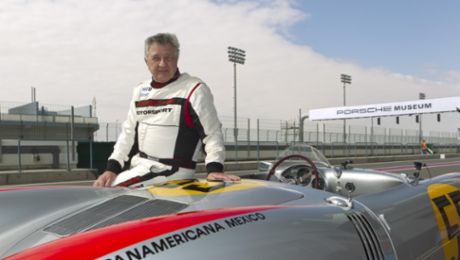911 Carrera S (2023): Fuel consumption* combined (WLTP) 11.1 – 10.1 l/100 km, CO₂ emissions* combined (WLTP) 251 – 229 g/km, CO₂ class G
911 Carrera S Cabriolet (2023): Fuel consumption* combined (WLTP) 11.0 – 10.3 l/100 km, CO₂ emissions* combined (WLTP) 250 – 233 g/km, CO₂ class G
911 Carrera S MT (2023): Fuel consumption* combined (WLTP) 10.7 – 10.1 l/100 km, CO₂ emissions* combined (WLTP) 243 – 229 g/km, CO₂ class G
911 Carrera S Cabriolet MT (2023): Fuel consumption* combined (WLTP) 10.7 – 10.3 l/100 km, CO₂ emissions* combined (WLTP) 243 – 233 g/km, CO₂ class G
“The eighth generation of the 911 is more powerful, more emotive and more efficient than its predecessor – with a wide range of digital features,” said Oliver Blume, CEO of Porsche, at the presentation of the 992 in November 2018. “And even with all the innovations, the 911 is still what it has been from the very beginning: a purist’s sports car and the pulsating heart of Porsche. It is our icon.” The new generation was still unmistakably a 911, even with the new digital cockpit. Only the rev counter, still in its central position, had an analogue display. The combination of a 10.9-inch touchscreen, an intelligent operating system and tradition was executed perfectly by the designers and engineers. The exterior design was heavily influenced by earlier 911 generations.
The revised model of the sports car kept the architecture of its predecessor, but there were changes. The newly developed eight-speed Porsche dual-clutch transmission (PDK) could accommodate an electric motor. False bottoms in the body created space for batteries. This means that the 911 has been hybrid-capable since 2019 – and optimally prepared for the future. The turbocharged, efficient six-cylinder boxer engines now provide 450 PS in the S version, and the PDK is even more powerful and efficient. Porsche has been building the 992 since 2018, with 96,603 examples having left the factory by the end of last year. “The Porsche story is unique and is a clear component of our identity. We are engineers and motorsport enthusiasts who like to take on challenges – and we enjoy competing with the ideas of others. Even if – or precisely because – we have to break with convention in the process,” says Frank Walliser, Head of Overall Vehicle Architecture and Characteristics at Porsche since 2022.

